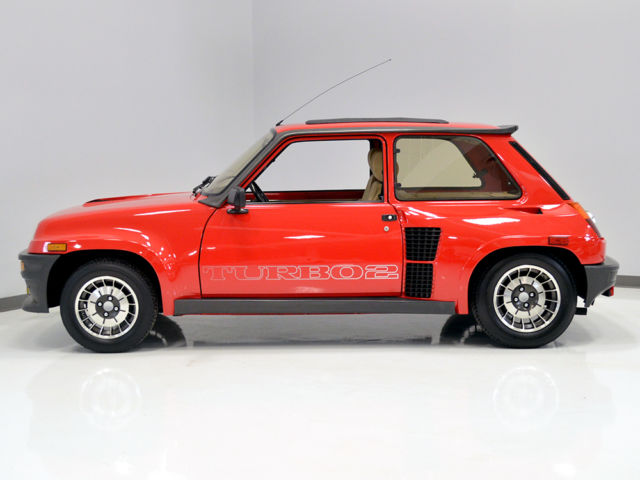Renault R5 Turbo 2, 10,600 original miles, 100% original, best in the world
- Price:
- Location: Macedonia, Ohio, United States
- Condition: Used
- Make: Renault
- Model: R5 Turbo
- Year: 1984
- Mileage: 10,600
- VIN: 11111111111111111
- Vehicle Title: Clear
1984 Renault R5 Turbo Description
VIN:VF1822000E0001321
What does an automaker like Renault do when they want to go rally racing but don’t have a car designed for such thing? You improvise. In the early 1980s, rally racing was taking Europe by storm, and it was a wild, wonderful time when rules were almost nonexistent and the cars were radical, brilliant, quirky, and above all, fast. Without something to compete with the likes of Audi’s Quattro and the Lancia Stratos, Renault did the next best thing by taking the Renault 5 (which was the notoriously crappy LeCar here in the States), yanking the anemic 1.3-liter engine and front-wheel-drive powertrain, and stuffing a snarling turbocharged engine and 5-speed transmission into the back seat. The result was the R5 Turbo, a nasty little chunk of hatchback that could devour dirt tracks and pavement with equal ease. The early street cars, which retroactively became known as the Turbo 1, were built for Group 4 homologation purposes, and featured aluminum doors and roof, spartan interiors, and minimal creature comforts. Strangely, the R5 Turbo was a success in every way, leading to the Turbo 2, which was a bit more civilized, less expensive, and designed for production as much as for the race track. Never imported to the US, we were left to entertain ourselves with the likes of the 90-horsepower Volkswagen Rabbit GTI, but if you want the original hot hatch, a car that was capable of chasing down Corvettes in its day, then an R5 Turbo is what you need.
This 1984 Renault R5 Turbo 2 is perhaps the finest example on the planet. It was officially imported in 1984 by Sun International, which was the country’s largest importer of Renaults. It shows just 17,122 original kilometers (about 10,600 miles) and is 100% original, right down to the original Michelin TRX tires. Bright red really is the only appropriate color on a car with this much performance potential, and this cool little hunk of hatchback looks downright predatory with those fat flared fenders. Fresh out of long-term storage and fully serviced, it’s a remarkable glimpse into the awesomeness that Europeans took for granted, a car that only a lunatic fringe in the US could love but which today has become one of the era’s hottest collectables. Why? It’s easy: it’s simply a blast to drive. With 160 horsepower on tap and a curb weight right around 2000 pounds, the power-to-weight ratio is similar to a C4 Corvette and with the wide track and short wheelbase, it’s insanely nimble. This is a deadly serious little weapon, make no mistake.
Of course, with so few miles and having spent the last two-and-a-half decades in protected, heated storage, it’s in fantastic condition. The body panels, which were steel on the Turbo 2 cars, are unmarked and the factory paint is completely untouched, orange peel and all. There are no touch-ups, no repainted panels, and only the most microscopic of indications that it’s been driven. To make a 5 into an R5 Turbo, the body got a complete makeover, starting with a custom front spoiler with integral fog lamps, a fiberglass hood with built-in air extractor, flared front fenders, and, of course, those bulging quarter panels that house an intercooler on the left and an oil cooler on the right. Other Turbo details include the spoiler that wraps around the roof and down the sides of the windshield, channeling air over the body to generate downforce. A custom rocker panel molding smoothly links the flared fenders and quarter panels and there’s a custom rear valence to pull air out of the engine compartment. Overall, the look isn’t exactly pretty, but it talks to you on a primal level and nobody—nobody—laughs at this Renault as it sits in the showroom. It’s like they know it’s more than willing to get up and kick some ass.
The interior was a big step up from the Turbo 1, and it’s a lot more comfortable without sacrificing any performance. Tan cloth upholstery is anonymous and easy to maintain, and the front bucket seats are modestly bolstered, a nice compromise between holding you in place and daily-driver practicality. The mouse fur upholstery is in excellent condition, showing minimal wear and no splits or tears. The same goes for the carpets and door panels, which are almost new, and there’s a set of black TURBO floor mats to keep everything tidy. The instrument panel covers the basics and is pretty much the same as the Euro-spec Renault 5, but you’ll note that Sun International, as part of the certification process, added an MPH decal to the speedometer to make it a little more user-friendly here in the states. However, if you look closely, you’ll see that the odometer is still listed in kilometers, and there’s no question that the 17,122 km showing is authentic. You also get an oil pressure gauge and a boost pressure gauge in the center stack, right above the heater controls. Other additions that were installed upon arrival here in the States include the Kenwood AM/FM/cassette stereo with big speakers on the rear hatch cover and a correct sliding fabric sunroof that is how Renault would have done it if the R5 Turbo was available with a sunroof. All of this was done when it was new and before the first owner took possession back in 1984 and it’s perfectly preserved today.
The trunk, which was formerly the engine bay on a garden-variety 5, now houses the radiator, spare tire, battery, and brake master cylinder. That’s the original spare tire that still shows engraving marks from the Sun International certification process and it doesn’t appear to have ever been used. There’s also a lug wrench neatly clamped to the inner fender and the battery is set low to keep the center of gravity at a subterranean level. It’s absolutely spotless in there.
In back, where you’d usually find the hatch and back seat, you will instead find a 1.4 liter turbocharged inline-4, which uses Bosch fuel injection and a rather large Garrett turbocharger with air-to-air intercooler to make 160 horsepower in street trim. There were other upgrades inside, including a forged crank, high-volume oil pump, and forged pistons, all designed with the addition of more boost on the track. Thanks to the fuel injection, it’s surprisingly docile and starts easily without any special histrionics: turn the key and it runs. The idle is a little racy, as if it wants to run, not sit still, but it never gets cranky and despite the race-quality engineering, it’s pretty happy to sit in rush hour traffic or take the slow way home. On the other hand, with that big turbo, it feels pretty lazy if you drive it gently, never really getting into the boost. Keep your foot on the throttle, however, and you’re rewarded with a wooshing crescendo of building boost and the engine comes alive at 3500 RPM, suddenly rocketing the little car forward like it was hungry. The 5-speed manual gearbox offers reasonably positive feel despite the long linkage reaching back behind the rear axle, and the clutch is light and easy to modulate, so it feels very user-friendly no matter how hard you’re working it.
The front suspension is conventional, but as you look around under the car, you can see the abrupt transition from production-ready floors and hardware to full race-grade stuff, right about at the rear edge of the doors. There’s a tubular steel subframe holding the engine, transmission, and rear suspension, custom tubular A-arms, and big disc brakes at all four corners. A stubby little muffler tucks in behind the rear fascia and aims downwards, and it’s fascinating to see the race-style adaptation of the hardware that’s still suitable for the street. Mostly. Of course, with so few miles, everything is in excellent condition, and that reddish cast you see on the floors isn’t rust but the actual color of the undercoating used to protect the underbody. The raw steel components in back were just given a quick coat of satin black by the factory, so they’re showing a little bit of age, but if you crave authenticity, there’s absolutely nothing under the car that has been replaced, including hoses, clamps, shocks, and even the muffler. It’s all 100% original and correct, making this one heck of a special survivor. The wheels are custom pieces just for the R5 Turbo with massive offsets and designed to use Michelin’s new TRX tires, which were state-of-the-art in 1984. They’re oddball sizes at 190/55/340 in front and 220/55/365 in back, but fortunately, reproductions are available; we’d recommend saving these originals for show duty.
We’ve already requested the domestication paperwork from Sun International and will be able to forward that to the new owner, but this is unquestionably the finest all-original R5 Turbo 2 available anywhere. It’s been freshly serviced and runs great, and we guarantee everyone will have questions about it every time you park. This is the coolest piece of French hardware from the ‘80s, and good ones like this are extremely rare. Call today!
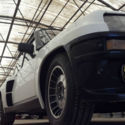 Renault 5 Turbo, Original California R5
Renault 5 Turbo, Original California R5
Mileage: 79,581
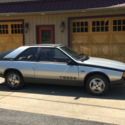 1984 Renault Fuego TURBO - Low VIN Number!! 38 One Made -- Original - Rare
1984 Renault Fuego TURBO - Low VIN Number!! 38 One Made -- Original - Rare
Mileage: 64,926
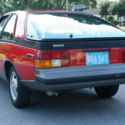 ONE OWNER ORIGINAL SURVIVOR - 1982 Renault Fuego Turbo Coupe - 35K ORIG MI
ONE OWNER ORIGINAL SURVIVOR - 1982 Renault Fuego Turbo Coupe - 35K ORIG MI
Mileage: 35,000
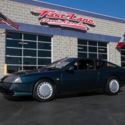 1990 Renault Alpine GTA 19k Original Miles Turbocharged Very Rare
1990 Renault Alpine GTA 19k Original Miles Turbocharged Very Rare
Mileage: 31,203
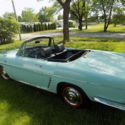 1961 Renault Caravelle / Rare Car / Convertible / Roadster / 28k Original miles
1961 Renault Caravelle / Rare Car / Convertible / Roadster / 28k Original miles
Mileage: 28,000
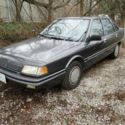 1988 Renault Medallion 60k Original Miles **Barn Find No Reseve**
1988 Renault Medallion 60k Original Miles **Barn Find No Reseve**
Mileage: 60204
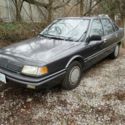 Vintage 1988 Renault Medallion 60k Original Miles ***BARN FIND, NO RESERVE***
Vintage 1988 Renault Medallion 60k Original Miles ***BARN FIND, NO RESERVE***
Mileage: 60204
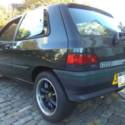 1992 Renault Clio, 33,000 Documented Original Miles, Clean Pennsylvania Title
1992 Renault Clio, 33,000 Documented Original Miles, Clean Pennsylvania Title
Mileage: 33,000
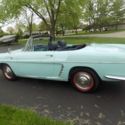 1961 Renault Caravelle / Convertible / Roadster / 28k Original miles / Barn find
1961 Renault Caravelle / Convertible / Roadster / 28k Original miles / Barn find
Mileage: 28,658
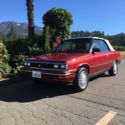 1986 Renault "ALLIANCE" DL 1.7 Convertible, AC, AM/FM, Great Original Condition
1986 Renault "ALLIANCE" DL 1.7 Convertible, AC, AM/FM, Great Original Condition
Mileage: 58,000
